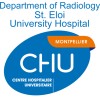
HBsAg Seroclearance in Adults With HBV Related Liver Fibrosis After Receiving Combined Therapy of...
Liver FibrosisLiver fibrosis caused by hepatitis B virus (HBV) infection is easy to progress to liver cirrhosis and liver cancer, with great harm and poor therapeutic effect. Nucleos(t)ide analogues (NAs) are the most commonly anti-HBV drugs currently . Long-term use of NAs can inhibit HBV DNA and achieve the purpose of reducing poor prognosis. However, adverse prognosis, such as liver cirrhosis and liver cancer, cannot be completely eliminated even under the status of virologic inhibition under THE action of NAs. Current studies have shown that the lower the HBV surface antigen (HBsAg) is, the better the long-term prognosis is. As another anti-HBV drug, pegylated-interferon-α (peg-IFN-α) has the immune regulation effect that NAs do not have, which can bring irreplaceable effects in HBsAg reduction and liver fibrosis reversal. Therefore, the combined therapy of NAs and peg-IFN-α is a hot issue in the field of liver diseases over the world, but the research and application of the combined therapy in patients with liver fibrosis are very few. The preliminary results of our previous research showed that the combined therapy of peg-IFN-α and NAs in patients with HBV related fibrosis were safe, and had a significant effect on HBsAg decline. On this basis, this study intends to carry out a multicentre, randomized controlled study, comparing the safety and efficacy between combined therapy (peg-IFN-α plus tenofovir) and tenofovir monotherapy in patients with liver fibrosis, especially focusing on HBsAg's decline and clearance, and the improvement of liver fibrosis degree, in order to find a better therapy, and to guide the clinical decision making.

COVID-19 Antibody Responses In Cystic Fibrosis
Cystic FibrosisCoronavirus disease 2019 (COVID-19) which is caused by the virus SARS-CoV-2 has resulted in an ongoing global pandemic. It is unclear whether the relatively low number of reported cases of COVID-19 in people with CF (pwCF) is due to enhanced infection prevention practices or whether pwCF have protective genetic/immune factors. This study aims to prospectively assess the proportion of pwCF, including both adults and children with CF who have evidence of SARS-CoV-2 antibodies over a two-year period. This study will also examine whether pwCF who have antibodies for SARS-CoV-2 have a different clinical presentation and what impact this has on their CF disease. The proposed study will recruit pwCF from paediatric and adult CF centres in Europe. Serological testing to detect antibodies will be performed on blood samples taken at month 0, 6, 12, 18 and 24 with additional time-points if bloodwork is available via normal clinical care. Clinical data on lung function, CF-related medical history, pulmonary exacerbations, antibiotic use, and microbiology and vaccination receipt, will be collected during routine clinical assessments. Associations will be examined between socio-demographic and clinical variables and serologic testing. The effects of SARS-CoV-2 infection on clinical outcomes and analyse end-points will be examined to explore any age-related or gender-based differences, as well as subgroup analysis of outcomes in lung-transplant recipients and pwCF receiving CFTR modulator therapies. As pwCF receive COVID-19 vaccination a comparison of the development and progression of anti-SARS-CoV-2 antibodies in pwCF following natural infection and vaccination SARS-CoV-2 over time will be performed.

Identification of Dysglycemia With Continuous Glucose Monitoring to Assess Clinical Evolution in...
Cystic FibrosisCystic fibrosis (CF)-related diabetes (CFRD) is the most important emerging complication after pulmonary complications. This specific form of diabetes is associated with an increased morbidity and mortality. CFRD prevalence at the age of 10 is 10% and reaches 40 to 50% in adulthood, while a similar percentage is afflicted with milder dysglycemia also called pre-diabetes abnormalities. In order to identify patients at risk and to implement early therapeutic measures, an annual CFRD screening test is recommended for CF patients after 10 years of age. The standard 2-hour oral glucose tolerance test (OGTT) is the recommended screening test. However, this test is perceived by both patients and CF care teams as unpleasant while adding a significant burden and workload, resulting in screening rates lower than 50% in most centers. An ideal alternative test should be simpler, less invasive, more sensitive than an OGTT to establish risks for lung function and/or nutritional deterioration, and predict future CFRD risk. To date, compared to the OGTT, no alternative screening method has demonstrated its effectiveness. However, continuous glucose monitoring (CGM) is emerging as a possible alternative method. In patients living with CF, CGM is easy to use and can identify early dysglycemia, which in turn, can predict increased risk of accelerated decline of pulmonary function and/or weight, higher risk of pseudomonas colonization, and future risk of CFRD. However, these observations are based on studies of small sample size with very limited prospective data. Furthermore, many of the multiple CGM metrics that have been standardized are based on the risk of complications associated with Type 1 and Type 2 Diabetes. Thus, there is a need for prospective studies to identify the CGM metrics and the cut-off level that is relevant as a predictor of clinical deterioration and/or CFRD risk in CF. The identification of such CF-specific criteria would provide important information to target at-risk patients.

Prospective Study of Pregnancy in Women With Cystic Fibrosis
Pregnancy RelatedCystic FibrosisIn this study, the investigators aim to evaluate changes in lung function in women with cystic fibrosis (CF) during pregnancy and for 2 years after pregnancy based on exposure to highly effective cystic fibrosis transmembrane conductance regulator (CFTR) modulators.

Rapid Breath-hold Quantitative Macromolecular Proton Fraction Imaging for Liver Fibrosis
Liver FibrosisChronic liver disease is a major health problem worldwide. Liver fibrosis is a key feature in most chronic liver diseases. When identified early, liver fibrosis may be reversible. Currently, liver biopsy is the gold standard for the diagnosis of liver fibrosis. Liver biopsy; however, is invasive. Non-invasive diagnostic tools are increasingly used in clinical practice. However, the existing noninvasive methods still have significant limitations to detect early-stage liver fibrosis. Liver fibrosis is characterized by excessive deposition of collagen-rich connective tissues in the liver. The macromolecular proton fraction (MPF) is an MRI parameter which characterizes the magnetization transfer (MT) effect in tissues. Quantitative MPF imaging is non-invasive and can be used to measure collagen deposition in the liver due to the strong MT effect of collagen. It has been reported MPF quantification can be used for diagnosis of early-stage liver fibrosis. However, the existing approaches require B1, B0, and T1 map in addition to the imaging data for MPF quantification, which makes it challenging to adopt them for routine clinical use. The investigators propose a fast and robust MPF quantification approach. In contrast to the existing methods which rely on saturation radiofrequency pulses for MPF quantification, our approach is based on spin-lock radiofrequency pulses which have minimum Rabi oscillations. The whole imaging data can be acquired within a breath-hold less than 8 seconds. Our approach only needs a B1 map in addition to the imaging data for MPF quantification. The preliminary clinical studies on 3.0T MRI show the measurement using our approach is specific to collagen content and can be used to detect early-stage liver fibrosis. To further confirm the clinical value of the proposed approach, the investigators will investigate the relationship of the collagen content measured using the proposed non-invasive imaging approach and those measured based on morphometry analysis of histology, and determine the diagnostic value of the proposed method for detection of early stage liver fibrosis in a large cohort. The investigators will also perform comparative studies of the proposed method and the state-of-the-art quantitative MPF imaging technique. This project will provide a diagnostic technology for early detection of liver fibrosis. The proposed MRI technology also has potential to be used for other clinical purposes.

Cystic Fibrosis Transmembrane Regulator (CFTR) Biomarker Study to Evaluate the Rescue of Mutant...
Cystic FibrosisThis observational study evaluates the effect of therapy with cystic fibrosis transmembrane regulator (CFTR) modulators on CFTR function measured by the CFTR biomarker intestinal current measurement (ICM), nasal potential difference (NPD) and sweat chloride in a post-approval setting in patients with cystic fibrosis (CF).

Characterization of Pulmonary Microbiome in Cystic Fibrosis Patients
Cystic FibrosisThe composition and role of the pulmonary microbiota is not yet well described in cystic fibrosis patients. The objective of our longitudinal follow-up of primary colonised patients is to show the presence of a link between the composition of the microbiota and the effectiveness of antibiotic therapy. All patients followed at the Montpellier CF center will be asked to participate in this cohort. All patients have a regular follow-up every 1 to 6 months and will be asked at each visit to keep their sputum sample in excess of the analyses requested for their follow-up

TIPS Plus Transvenous Obliteration for Gastric Varices
CirrhosisLiver5 moreVariceal hemorrhage (VH) from gastric varices (GVs) results in significant morbidity and mortality among patients with liver cirrhosis. In cases of acute bleeding, refractory bleeding, or high risk GVs, the transjugular intrahepatic portosystemic shunt (TIPS) creation and transvenous variceal obliteration procedures have used to treat GVs. While these techniques are effective, each is associated with limitations, including non-trivial rebleeding and hepatic encephalopathy rates for TIPS and aggravation of esophageal varices, development of new or worsening ascites, and formation of difficult to treat ectopic varices for transvenous obliteration. Increasingly, however, TIPS and transvenous obliteration are viewed as complimentary procedures that can be combined to reduce bleeding risk and ameliorate sequelae of portal hypertension. Yet, despite a strong mechanistic basis for their combination, there are few studies investigating the combined effectiveness of TIPS plus transvenous obliteration. Thus, the aim of this single center prospective pilot study is to assess the effectiveness and safety of combined TIPS creation plus transvenous obliteration for the treatment of GVs, with the overall goal of improving the clinical outcomes of patients with VH related to GVs. The work proposed could lead to important advances in the treatment of bleeding complications due to liver cirrhosis.

Feasibility of a New Model for Exercise Prescription in Cystic Fibrosis
Cystic FibrosisThe purpose of this protocol is to begin an exercise program combined with behavioral counseling for patients who are hospitalized with a cystic fibrosis exacerbation. The exercise program will begin during the hospital stay. Beginning an exercise program during this period of reduced mobility and isolation may be an ideal time to deliver a structured exercise prescription along with a behavioral program to promote long-term adherence to exercise (structured physical activity) . Hospitalized patients have an acute awareness that their lung function is declining and may be more motivated and open to changing their behavior and adding exercise to their treatment regimen.

Impact of Early Lung Physiology, Viral Infections and the Microbiota on the Development and Progression...
Confirmed Diagnosis of Cystic FibrosisThis study collects data on microbiological factors and lung function parameters (e.g. spirometry, body plethysmography, lung-MRI) to assess their interaction on the lung growth and lung development of infants and children with Cystic Fibrosis (CF).
